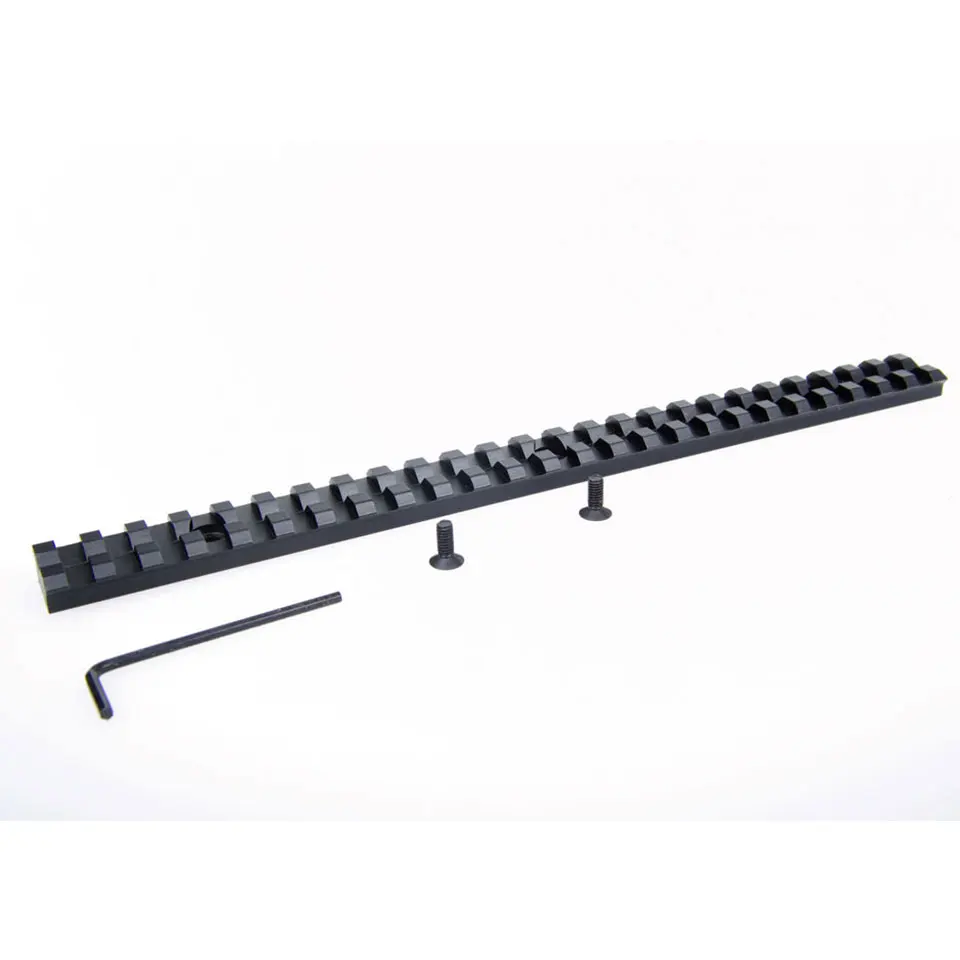
However, because there is no standard requirement for spacing, there is incredible variety among Weaver rails. Once rifles with detachable magazines became more common, one-piece Weaver systems began to replace the original two-piece design. When the Weaver rail was first introduced, this two-piece design was essential for cartridge insertion, especially for rifles with internal magazines that could be fed with striper clips. This two-piece design made mounting optics time-consuming and proper alignment complicated. Initially, Weaver rails were made in two separate pieces. The Weaver rail design features a pair of parallel rails with several perpendicular slots. However, this mounting method often failed under rifle recoil. Before the development of the standard weaver rail, rifles were often drilled and tapped for small screws to secure a mounted scope. Also called a “tip off” mount, the dovetail rail allows the shooter to easily remove and replace mounted optics.Īlthough dovetail rails come in a variety of sizes, the most common are 11mm and 3⁄8 inch (9.5 mm).ĭeveloped by William Ralph Weaver, the Weaver rail was created in an attempt to standardize scope mounts. This same stable and secure joinery is employed in the dovetail rail system.Ĭommonly used on rimfire rifles and air guns, the dovetail mounting system features two grooves that run parallel to the bore. One of the oldest joining systems in history, dovetail joints are common in woodworking, often used to join corners in cabinetry and furniture. The dovetail rail gets its name from its trapezoidal shape, which resembles the fanned out tail of a dove. Knowledge is power, especially when it comes to firearms, so for the sake of education, here is a basic explanation of the three most common types of mounting systems. However, even seasoned shooters may have difficulty explaining the differences. It is easy for inexperienced shooters to think thinking this is basic firearm knowledge. New shooters are often wary when it comes to asking questions about these rail systems. Although some manufacturers use their own unique rail designs (Glock’s Modular Optic System for example), there are three main styles commonly used on modern firearms: dovetail, Weaver, and Picatinny. Rail styles vary between manufacturers and even between specific models.

If not, an aftermarket rail can usually be installed with minimal effort. Modern firearms typically integrate some type of rail system into their construction. Understanding the differences will help prevent common mistakes and ensure your optics, laser sights, fore grips, bipods, and other accessories hold firm during shooting. There are several common types of rail systems available to easily attach accessories. This link must be secure enough to handle normal bumps and jostles, but must also be capable of holding tight during violent and repetitive recoil. Other categories you might be interested in are 9mm Luger Ammunition, Pipe Fitting Equipment, Pipets & Liquid Handling, Pistol Barrels, Pistol Bullets.Your rail or mounting system is the crucial link between your firearm and your accessories. These tactical rails and mounts provide the perfect platform for customizing your firearm. Not quite certain what rail fits your gun or accessories best? Reach out to our product specialists to find the perfect match today. Whether you use a rifle or a shotgun, you will find the perfect tactical rail system for your needs.Įverything from the AR-15 tactical handguards to tactical shotgun rail forends, the perfect modular platform is waiting for you.

Take advantage of modularization that tactical rail systems offer so you can mount weapon lights, laser sights, red dot sights and other gear on your favorite tactical weapon system. Here at OpticsPlanet, you can find tactical rails and tactical rail systems from prominent brands such as:

Rail systems such as the Mil-Spec 1913 Picatinny rail system. Tactical Rails, Mounts, and Systems are what set apart tactical operators today.


 0 kommentar(er)
0 kommentar(er)
